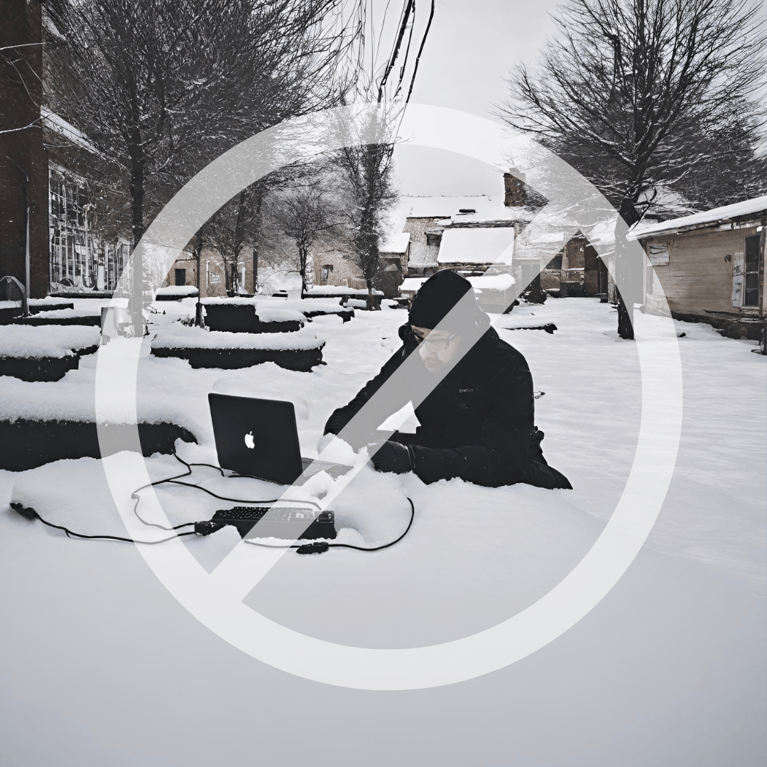With winter's arrival, it's not just about ensuring you're staying warm and snug; it's also about ensuring your tech is well-prepared for the cold months. At Inflection Point, we're dedicated to helping you navigate these seasonal challenges with ease. Here are ten essential winter tech tips to protect your devices and maintain optimal functionality during the colder months.
1. Avoid Leaving Devices in Cold Vehicles
Leaving electronic devices in a cold car can significantly affect their performance and longevity. Batteries can lose charge quickly in cold temperatures, and LCD screens may respond slowly or become unresponsive. Additionally, extreme cold can cause internal components to contract, potentially leading to physical damage. To prevent these issues, always carry your gadgets with you rather than leaving them in a cold vehicle. If your device does become very cold, allow it to gradually return to room temperature before turning it on to avoid internal condensation.
2. Beware of Condensation
Rapid temperature changes, like bringing a cold device into a warm room, can cause condensation inside, which might damage its internal components. To prevent this, allow your device to slowly acclimatize to room temperature before using it. Keeping devices in insulated cases can help moderate the temperature changes and reduce the risk of condensation. If you suspect condensation has occurred, it's best to leave the device turned off until it dries completely. Silica gel packets can be used to help absorb any excess moisture in your gadget bags.
3. Monitor Battery Health
Cold weather can cause batteries to deplete faster than usual. This is especially true for devices that are used outdoors, like smartphones and tablets. To maintain battery health, keep your devices as warm as possible and avoid exposing them to extreme cold for extended periods. If you know you'll be in a cold environment, carrying a portable charger can be a lifesaver. It's also a good practice to check your device's battery health settings and perform any recommended maintenance or replacements. Give Inflection Point a call if you think a replacement is needed.
4. Keep Devices Dry and Clean
Winter moisture in the form of snow, rain, or even high humidity can be harmful to electronic devices. Always ensure your gadgets are dry and store them in waterproof or water-resistant cases when venturing outdoors. Cleaning your devices regularly can also prevent build-up of moisture and dirt, which can be more prevalent during winter. Microfiber cloths are excellent for cleaning screens and surfaces without scratching them. Remember, even a small amount of moisture can cause significant damage if it gets inside the device.
5. Update Software for Security
With the increase in indoor activities during winter, it's a good time to ensure all your software, particularly security software, is up to date. Cyber threats often increase during the holiday season, making it more important to have the latest security updates and patches installed. Regular software updates not only improve security but can also enhance performance and introduce new features. Setting up automatic updates where available can ensure you're always protected. Regular checks for updates, at least once a week, can keep your devices secure and functioning optimally.
6. Protect Devices from Heat Sources
While keeping your devices warm is crucial, direct exposure to heat sources like heaters or radiators can cause overheating and damage. It's essential to maintain a safe distance between your devices and heat sources. Overheating can lead to battery damage, reduced performance, and in extreme cases, may even pose a fire risk. Ensure your workspaces are evenly heated and monitor your devices for any signs of overheating. If your device gets too hot, turn it off and allow it to cool down before resuming use.
7. Handling Touchscreens with Winter Gloves
Using touchscreens in winter can be a challenge, especially when you're bundled up in gloves. Traditional gloves won't work with capacitive touchscreens, which are standard on most smartphones and tablets. However, touchscreen-friendly gloves are designed with conductive material on the fingertips, allowing you to use your device without removing them. Another option is to use a stylus pen, which is particularly handy if you find touchscreen gloves cumbersome or if you need more precision. Stylus pens can be easily carried in your pocket or attached to your device, providing an efficient way to keep using your touchscreen in cold weather.
8. Plan for Remote Work Capabilities
Winter weather can often disrupt travel plans, making it difficult for employees to reach the office. It's essential to have a plan in place for remote work, especially if your business doesn't operate on a hybrid model. This includes ensuring employees have access to necessary files using software like OneDrive, a reliable internet connection, and proper communication tools like Teams. Test your remote work setup before it’s needed to ensure a smooth transition in case of severe weather, train delays or accidents. Tools like VPNs can provide secure connections, while cloud services like Microsoft 365 Business Premium ensure complete and seamless access to documents and applications from any location.
9. Backup Data Regularly
Winter weather can be unpredictable, leading to power outages and other disruptions that could result in data loss. Regular backups are crucial to protect your important files. Cloud storage solutions offer an easy and secure way to back up data remotely, ensuring it's safe even if your physical devices are damaged or lost. Additionally, external hard drives can provide a local backup option. Automating your backup process can ensure that your data is consistently copied and up to date, providing peace of mind throughout the winter months.
10. Staying Informed About Weather-related Tech Issues
Staying updated on weather forecasts can help you prepare for potential tech-related issues. For instance, if a major snowstorm is expected, consider having employees preemptively work from home to avoid travel risks. This can also help you plan for any necessary changes in customer support or service availability in advance. Informing your clients and customers about potential delays or changes in operation due to weather conditions can also help manage expectations and maintain good business relationships.
 Top 10 Winter Tech Tips: Protecting Your Devices and Data in the Cold
Top 10 Winter Tech Tips: Protecting Your Devices and Data in the Cold Navigating the World of Compliance: GDPR, Cyber Essentials, and Beyond
Navigating the World of Compliance: GDPR, Cyber Essentials, and Beyond DNSFilter: Revolutionising Cybersecurity for Modern Businesses
DNSFilter: Revolutionising Cybersecurity for Modern Businesses Top 10 Festive Season Scams: Safeguarding Your Business Against Seasonal Cyber Threats
Top 10 Festive Season Scams: Safeguarding Your Business Against Seasonal Cyber Threats Embracing Next-Generation Cybersecurity with SentinelOne: A Deep Dive for Modern Businesses
Embracing Next-Generation Cybersecurity with SentinelOne: A Deep Dive for Modern Businesses